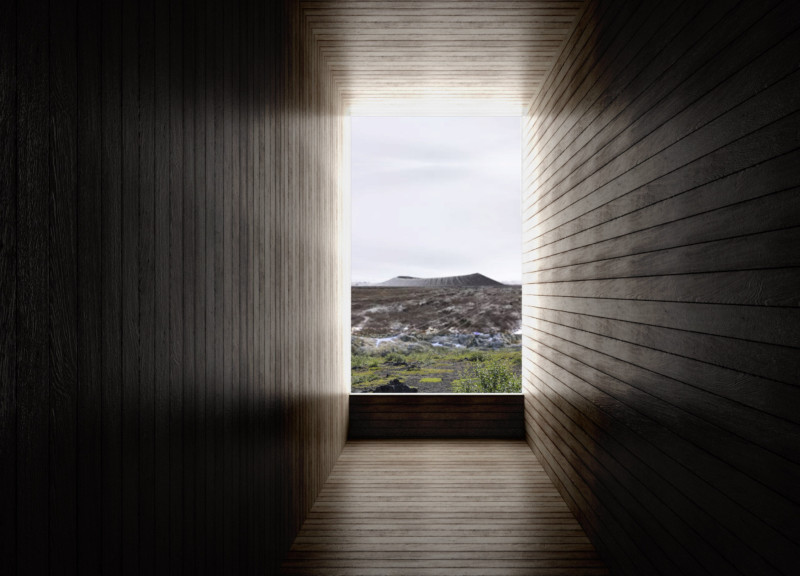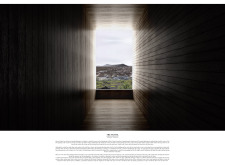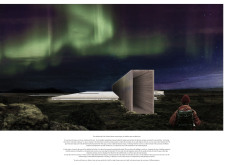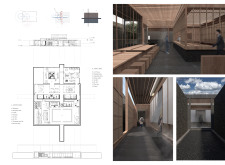5 key facts about this project
The museum is strategically positioned to highlight the relationship between human activity and the natural world. The architecture itself serves as an extension of the landscape, featuring a series of interconnected spaces that encourage exploration and learning. Key design elements include a series of framed openings that showcase panoramic views of the surrounding terrain, which not only enhance the interior ambiance but also remind visitors of the majestic geothermal activity that characterizes Iceland.
Unique Design Approaches
One distinctive aspect of this project is the integration of natural materials in the design. The use of wood and brick reflects the local context while ensuring durability in the face of Iceland's harsh climatic conditions. These materials are complemented by expansive glass façades that enhance natural light penetration, blurring the boundaries between the interior and exterior spaces. This design choice emphasizes transparency and creates a dialogue between the museum's visitors and the stunning Icelandic landscape.
Integrating sustainability into the design is a principal focus, employing eco-friendly building practices and materials. The orientation of the building maximizes sunlight exposure, reducing the need for artificial lighting and heating. Additionally, the architectural layout encourages a flow that guides visitors through various educational exhibits that detail volcanic activity, the impact of eruptions on the landscape, and broader geological concepts.
Spatial Organization and Functionality
The layout of the Volcano Museum is thoughtfully organized to enhance visitor experience. Exhibition spaces are designed for interaction and engagement, utilizing flexible configurations that can accommodate diverse educational programs and public events. Rest areas and observation points are strategically placed to offer quiet reflection amidst the vibrant educational backdrop.
The architectural design includes distinct zones that serve specific functions—such as exhibit halls, lecture rooms, and visitor amenities—yet maintains a cohesive spatial experience that promotes movement and exploration. Each area is carefully designed to foster curiosity and provide educational value, transforming the museum into an active participant in the storytelling of Iceland’s geological narrative.
For those interested in exploring the architectural plans, sections, and design elements that contribute to this project, a detailed presentation is available. Individuals are encouraged to delve deeper into the architectural designs and innovative ideas that underscore the Volcano Museum's commitment to education and environmental integration.


























